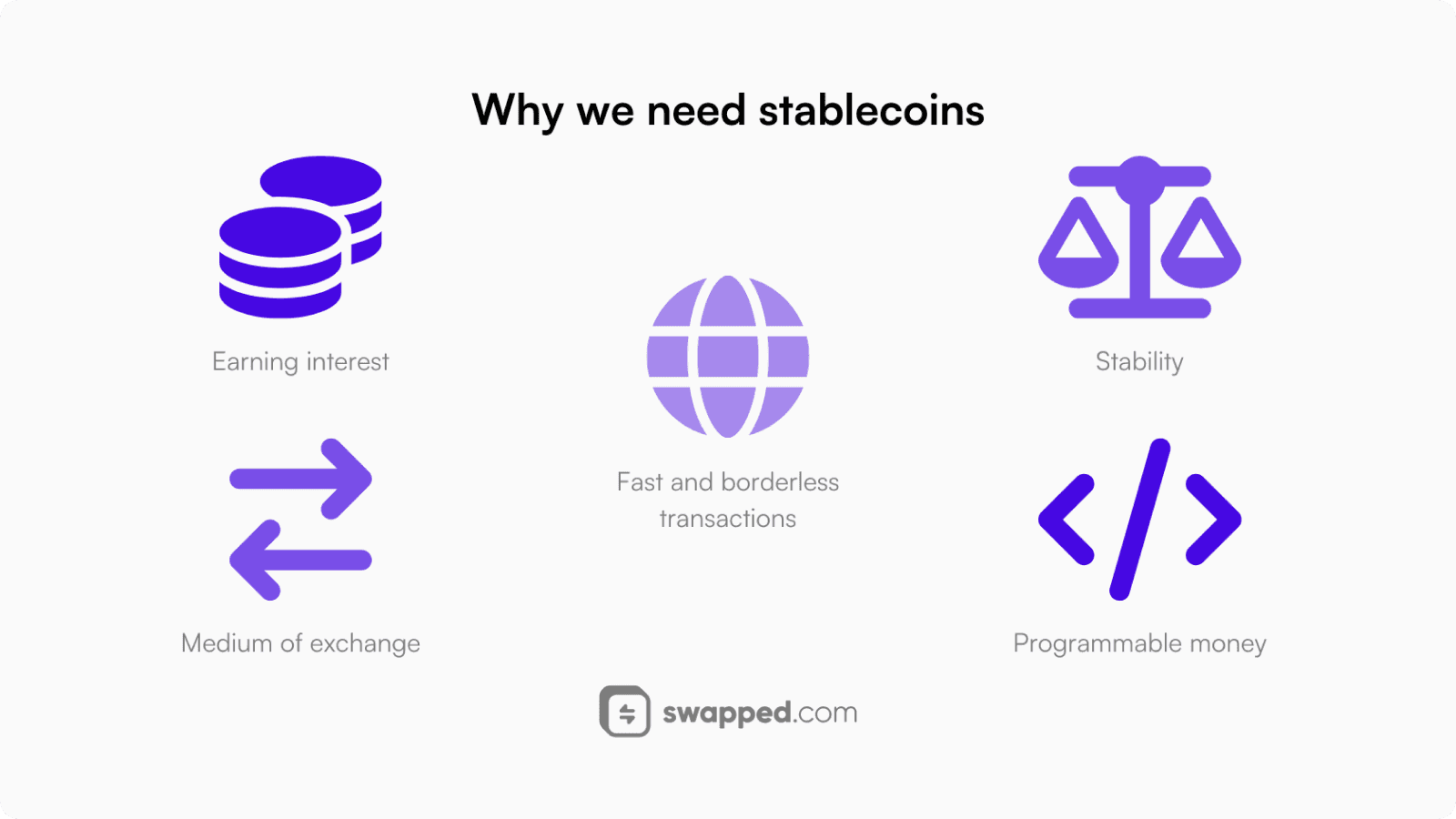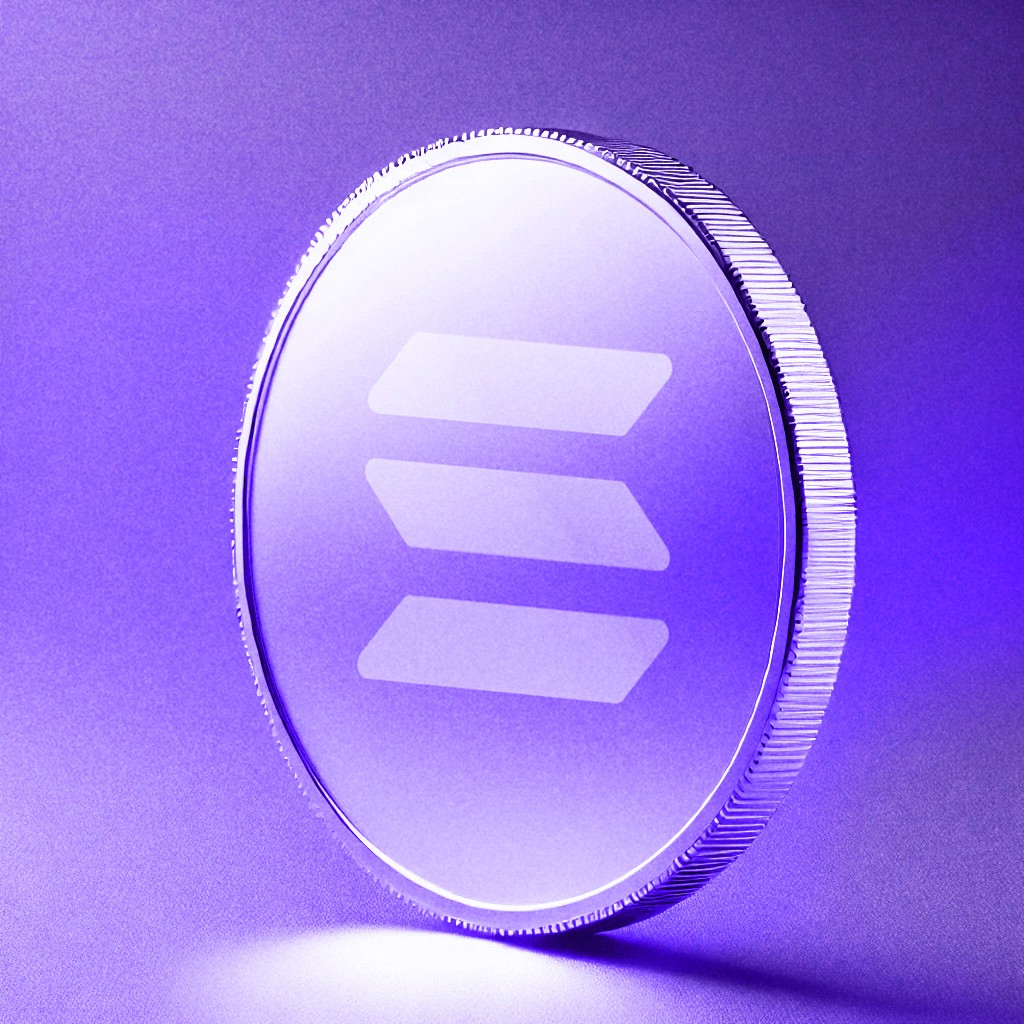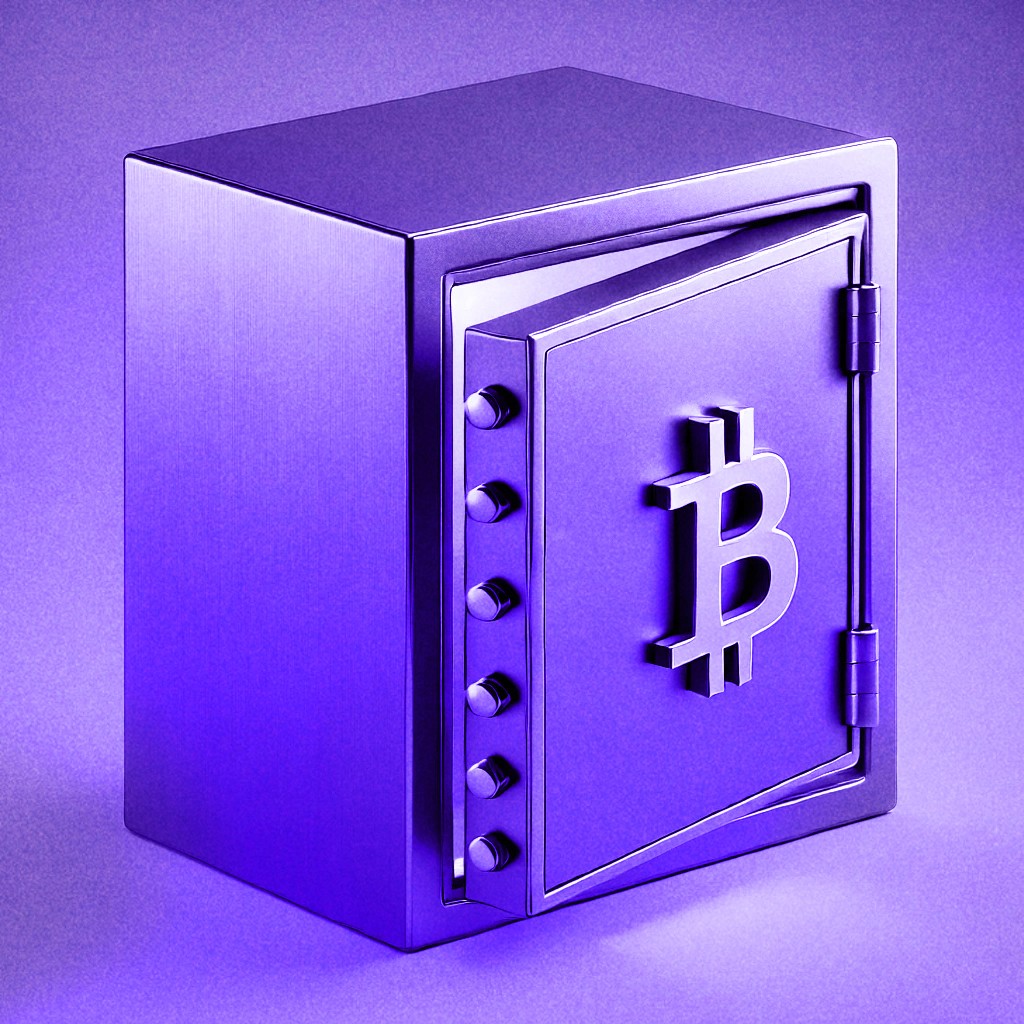
27. okt. 2024
Stablecoins are digital currencies pegged to assets like fiat currencies or commodities, designed to maintain a stable value. By using blockchain technology, they offer the security and speed of cryptocurrencies while minimizing volatility. They're key for connecting traditional and digital economies.
Envision you’re traveling to a foreign country. You arrive with your suitcase and your native currency, ready to explore, but there’s one issue: the value of your money fluctuates wildly every day. One morning, your dollars can buy you a grand feast, but by evening, they’re barely worth a cup of coffee. It’s a chaotic, anxiety-inducing scenario. Now, replace “traveling” with “using cryptocurrencies,” and you’ll understand one of the primary challenges of digital money—volatility.
Enter stablecoins: the calm in the storm of cryptocurrency. They’re like the reliable, steady friend you can always count on, offering stability in a world known for its wild price swings. But what exactly are stablecoins, how do they work, and why are they so important? Let’s dive in.
The problem to be solved
To understand the need for stablecoins, let’s first explore the problem of volatility in cryptocurrencies. Bitcoin, the poster child of crypto, can see its price skyrocket by thousands of dollars in a day—and drop just as quickly. For traders, this volatility can be exciting, but for ordinary people or businesses, it’s impractical.
Imagine trying to pay for groceries with Bitcoin. If the price of Bitcoin crashes between the time you leave the house and the moment you pay, you might suddenly find your Bitcoin worth far less than the groceries cost. This unpredictability is a major roadblock for mass adoption.
Stablecoins aim to bridge this gap by offering the best of both worlds: the innovation of cryptocurrencies and the reliability of traditional currencies.
What are stablecoins?
Stablecoins are cryptocurrencies designed to maintain a stable value. Unlike Bitcoin or Ethereum, whose prices are driven by market speculation, stablecoins are tied to an external asset, such as a national currency (like the US dollar), a commodity (like gold), or even an algorithmic system designed to keep the value steady.
In essence, stablecoins are like the steady boat in the choppy waters of the crypto sea, giving users a way to trade, save, and transact without worrying about wild price fluctuations.
How stablecoins work?
Stablecoins achieve their stability through mechanisms designed to anchor their value to a specific reference point, such as a fiat currency, commodity, or even a mathematical algorithm. These mechanisms can vary significantly depending on the type of stablecoin.
Fiat-backed stablecoins
The simplest and most common type is fiat-backed stablecoins, which are directly tied to a government-issued currency like the US dollar or the euro. For every stablecoin in circulation, an equivalent amount of fiat currency is held in reserve, often in a bank or a secure account. For instance, if a company issues 1 million stablecoins pegged to the US dollar, they should ideally have $1 million in reserves to back them. This ensures that users can redeem their stablecoins for the corresponding fiat currency at any time, maintaining a steady 1:1 value.
Commodity-backed stablecoins
Another category is commodity-backed stablecoins, which derive their stability from being tied to tangible assets like gold, silver, or other physical goods. These stablecoins represent ownership of a specific amount of the asset. For example, one gold-backed stablecoin might represent one gram of gold stored in a secure vault. This type of stablecoin allows users to benefit from the stability of a commodity’s value while transacting in a digital, blockchain-based form.
Algorithmic stablecoins
The third type, algorithmic stablecoins, operates without any physical reserves. Instead, they rely on advanced algorithms and smart contracts to regulate their value. These systems automatically adjust the supply of the stablecoin based on market demand to maintain its target value. If the price rises above the intended peg, the system increases the supply, making the coin more abundant and driving the price back down. Conversely, if the price falls below the peg, the supply is reduced, creating scarcity and pushing the value back up. While innovative, these stablecoins are more experimental and can be prone to instability if the algorithms fail or the market reacts unpredictably.

Stablecoins are needed in the world of cryptocurrencies for a number of reasons
Each type of stablecoin uses its own mechanism to maintain stability, offering different advantages and challenges. While fiat-backed and commodity-backed stablecoins depend on the credibility of their reserves, algorithmic stablecoins seek to bypass reliance on physical assets altogether, using technology to achieve their goals. Despite these differences, they all aim to provide a dependable, stable value in the ever-changing landscape of cryptocurrencies.
Why are stablecoins important?
Stablecoins have a wide range of applications that make them indispensable in the crypto ecosystem. Here are a few key reasons they matter:
Bridging traditional and digital finance
Stablecoins act as a bridge between traditional finance and the world of cryptocurrencies. Since they’re tied to familiar assets like dollars or gold, they make it easier for people to transition into crypto without dealing with volatility.
Facilitating cross-border transactions
Imagine sending money overseas without waiting days or paying hefty fees. Stablecoins enable fast, low-cost cross-border transactions. Since their value is stable, neither the sender nor the recipient has to worry about price changes during the transfer.
Enabling decentralized finance
Stablecoins are a cornerstone of DeFi, a rapidly growing sector of finance that operates without intermediaries like banks. In DeFi, stablecoins are used for lending, borrowing, and earning interest, offering financial services to anyone with an internet connection.
Hedging against volatility
Crypto traders often use stablecoins as a safe haven. When the market becomes turbulent, they can move their funds into stablecoins to protect their value, much like fleeing to cash during a stock market downturn.
Examples of stablecoins
To bring stablecoins to life, let’s look at a few popular examples:
Tether (USDT): the first and most widely used stablecoin, USDT is pegged to the US dollar and is often used for trading and transferring funds.
USD Coin (USDC): a regulated, fiat-backed stablecoin that’s considered more transparent than USDT, USDC is popular in both trading and DeFi.
Dai (DAI): a decentralized stablecoin maintained by the MakerDAO protocol. Unlike fiat-backed stablecoins, DAI is collateralized by other cryptocurrencies.
The challenges ahead
While stablecoins offer numerous benefits, they’re not without challenges:
Regulation: governments are paying close attention to stablecoins, as they could disrupt traditional financial systems. Regulatory crackdowns could impact their use and growth.
Transparency: some stablecoin issuers have faced criticism for not being transparent about their reserves, raising concerns about whether the coins are truly backed as claimed.
Algorithmic failures: algorithmic stablecoins, in particular, have struggled to maintain stability, with some losing their peg entirely.
How to buy and store stablecoins?
To buy stablecoins, you’ll need a platform that supports cryptocurrency purchases. For instance, Swapped.com offers several payment methods—Apple Pay, Google Pay, Credit Cards, Skrill, and Bank Transfer—making it quick and easy to buy stablecoins, which is delivered within minutes.
Buying: purchase USDC or USDT easily with Swapped.com. Just make sure you have funds available and choose a payment method, such as a credit card or bank account.
Storing: you can store stablecoins in a digital wallet, either online or on a physical device called a hardware wallet. Hardware wallets add extra security by keeping your stablecoins offline.

Stablecoins are meant to offer a bit of stability in the unstable crypto waters
The future of stablecoins
As the world moves toward a more digital economy, stablecoins are likely to play an even bigger role. Central banks are exploring their own versions, known as Central Bank Digital Currencies (CBDCs), which could coexist with or compete against private stablecoins.
Stablecoins could also pave the way for new financial systems, offering accessibility, speed, and innovation. However, their success will depend on balancing innovation with regulation and trust.
Stability in an unstable world
Stablecoins are the unsung heroes of the cryptocurrency world. They offer a stable, reliable way to navigate the exciting but volatile realm of digital assets, making them a valuable tool for beginners and seasoned traders alike.
Whether you’re looking to dip your toes into cryptocurrency, send money across borders, or explore the frontier of DeFi, stablecoins provide a steady foundation to build upon. They might not be as glamorous as Bitcoin or Ethereum, but their potential to transform finance is just as powerful.
So, next time someone mentions stablecoins, you’ll know exactly what they mean—and why they matter in the future of money.
Table of contents

























